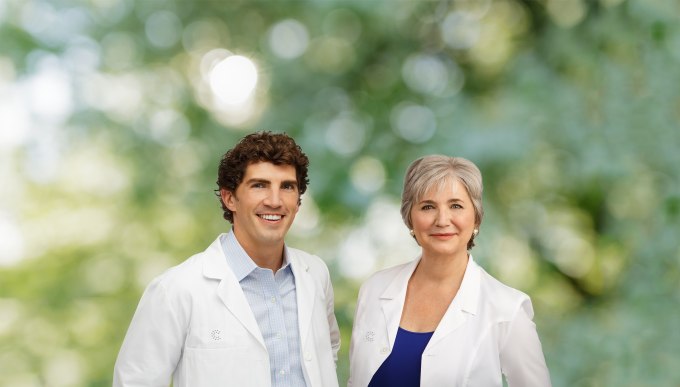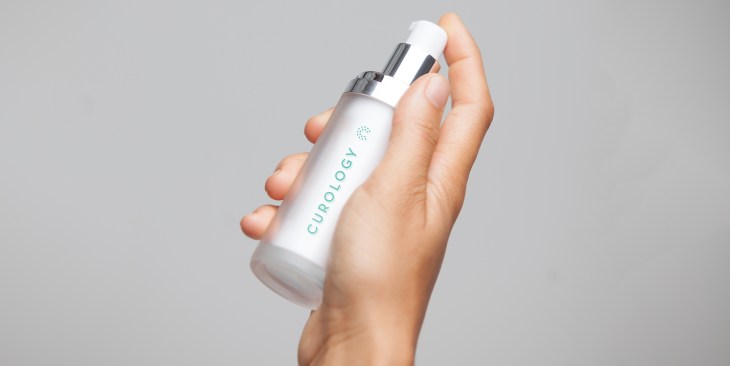David Lortscher was one of a few dozen people practicing dermatology in New Mexico when he realized a huge problem in the field: There weren’t enough dermatologists, and people were skipping out on visits because they thought it was for more affluent people or took too long.
So Lortscher decided to start Curology, which provides acne and anti-aging treatment and prescriptions through a visual diagnosis done with your phone, with his brother working remotely in Hong Kong to try to bring dermatological treatment to a more broad audience. Instead of waiting months for an initial appointment for a prescription — and then potentially months after that for a follow-up — the goal for Curology was to get the treatments into the hands of patients as quickly as possible.
Users take a photo of their skin condition, which is uploaded to Curology’s team of dermatological specialists. They then decide on a customized treatment schedule and prescribe medication — generally in the form of a topical acne and anti-aging treatment — and send it to patients for about $20 per month. To do all this, Curology has raised $15 million from Advance Vixeid Partners, along with Forerunner Ventures and Sherpa Capital in a new round of financing.
Curology’s launch highlights some of the challenges of telemedicine. To basically become a fully licensed medical practice that can distribute its treatments, Curology had to become licensed in each individual state. The difficulty of getting each license can vary, but it still is very time intensive and can hamper the launch schedule of companies hoping to get a similar business off the ground.
“At first we were pursuing making a downloadable app, and that didn’t make it into the final experience,” Lortscher said. “We started doing an HTML5 web app, we’re really happy we did because people who did want to sign up for this thing, they don’t want to go through the process of downloading an app first, they want to click right through the browser to get started. I wanted there to not feel like there’s any barriers.”
Curology decided to go a different route in two ways: relying on medical professionals doing diagnoses instead of AI-powered image recognition, and focusing just on anti-aging and acne treatments that are easier to do with a visual diagnosis. That’s really all Lortscher had to do as a practicing dermatologist in order to prescribe treatments, which frustrated him that so few people had access to and were waiting so long to get treatments.
“We do use photos, those go directly to medical professionals,” Lortscher said. “The interesting thing, you cannot prescribe medication using AI, that is not a thing. It would not be good medicine. These are prescription meds we use, and running that through something without a licensed human making the ultimate decision would be irresponsible.”
The whole process of building the formula wasn’t necessarily easy either. Building the kinds of packaging and products for something like this requires a careful balancing act of ensuring that the ingredients both have a long shelf life and don’t end up deactivating each other. That includes both active and inactive ingredients, and figuring out which agents to use in the first place.
There will be a lot of competition on the horizon. The biggest one is obvious: Proactiv, which has a massive marketing presence across a wide variety of channels and a huge install base already. If Proactiv were to adopt the kind of telemedicine model that Curology is starting to deploy, it could easily start chewing into the market and grow beyond its already sizable customer segment. But Proactiv, and other startups that might expand into acne treatment, isn’t worrying Lortscher — at least not yet.
 “That’s something that I’m sure some day will happen, the fact is we have 50 million people in the country with acne, 3 million of which are using Proactiv,” Lortscher said. “That’s way more than we can service in the next 2 years, and way more than Proactiv can service. It would be scary, but I think it would end up being immaterial just because there are so many people with this problem, it’s such a real need someone else taking half of the market isn’t going to materially affect what we do.”
“That’s something that I’m sure some day will happen, the fact is we have 50 million people in the country with acne, 3 million of which are using Proactiv,” Lortscher said. “That’s way more than we can service in the next 2 years, and way more than Proactiv can service. It would be scary, but I think it would end up being immaterial just because there are so many people with this problem, it’s such a real need someone else taking half of the market isn’t going to materially affect what we do.”
The company is also going to have to be able to train up staff (which isn’t exclusively dermatologists, but are all trained in dermatology and can prescribe treatments) that can quickly adapt to unique cases, like allergic reactions or treatment plans that aren’t working or making things worse.
At the moment — and for the foreseeable future — Curology doesn’t expect to expand beyond its current treatments. That’s both because the market is so large and its current business is much more accessible with visual diagnosis. With those boundary conditions in place, that means that it’s a reasonable model to scale up as it can make the process of diagnosing patients more and more efficient.
Moving forward, it’s time for Curology to start getting the word out there. The company is raising financing right now because it wants to start expanding its marketing — and, of course, the rest of the team, which is five times larger than it was a year ago. Thus far the company has largely grown through word of mouth, but applying similar principles that other pharmaceutical startups have used to grow — like paid acquisition on Facebook and other channels — may help it grow into that 50 million-person market Lortscher talks about.
